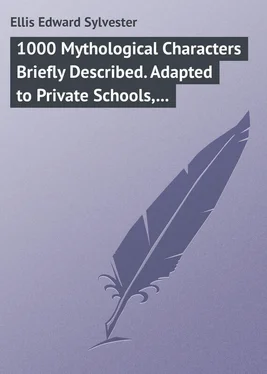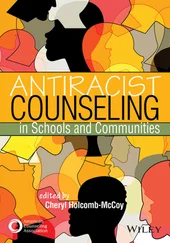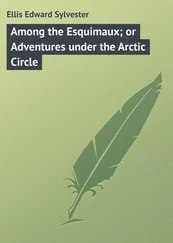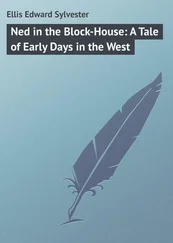Edward Ellis - 1000 Mythological Characters Briefly Described. Adapted to Private Schools, High Schools and Academies
Здесь есть возможность читать онлайн «Edward Ellis - 1000 Mythological Characters Briefly Described. Adapted to Private Schools, High Schools and Academies» — ознакомительный отрывок электронной книги совершенно бесплатно, а после прочтения отрывка купить полную версию. В некоторых случаях можно слушать аудио, скачать через торрент в формате fb2 и присутствует краткое содержание. Жанр: foreign_language, foreign_prose, на английском языке. Описание произведения, (предисловие) а так же отзывы посетителей доступны на портале библиотеки ЛибКат.
- Название:1000 Mythological Characters Briefly Described. Adapted to Private Schools, High Schools and Academies
- Автор:
- Жанр:
- Год:неизвестен
- ISBN:нет данных
- Рейтинг книги:4 / 5. Голосов: 1
-
Избранное:Добавить в избранное
- Отзывы:
-
Ваша оценка:
- 80
- 1
- 2
- 3
- 4
- 5
1000 Mythological Characters Briefly Described. Adapted to Private Schools, High Schools and Academies: краткое содержание, описание и аннотация
Предлагаем к чтению аннотацию, описание, краткое содержание или предисловие (зависит от того, что написал сам автор книги «1000 Mythological Characters Briefly Described. Adapted to Private Schools, High Schools and Academies»). Если вы не нашли необходимую информацию о книге — напишите в комментариях, мы постараемся отыскать её.
1000 Mythological Characters Briefly Described. Adapted to Private Schools, High Schools and Academies — читать онлайн ознакомительный отрывок
Ниже представлен текст книги, разбитый по страницам. Система сохранения места последней прочитанной страницы, позволяет с удобством читать онлайн бесплатно книгу «1000 Mythological Characters Briefly Described. Adapted to Private Schools, High Schools and Academies», без необходимости каждый раз заново искать на чём Вы остановились. Поставьте закладку, и сможете в любой момент перейти на страницу, на которой закончили чтение.
Интервал:
Закладка:
Edward Sylvester Ellis
1000 Mythological Characters Briefly Described / Adapted to Private Schools, High Schools and Academies
INTRODUCTION
There are many expressions which, though simple in themselves, must forever remain beyond the grasp of human comprehension. Eternity, that which has neither end nor beginning, baffles the most profound human thought. It is impossible to think of a point beyond which there is absolutely nothing, or to imagine the passing of a million years without bringing us one day or one minute nearer to their close. Suppose that one could fix upon the terminal point, we would still fancy something beyond that, and then some period still more remote would present itself, and so on ad infinitum .
The same insurmountable difficulty confronts us when we seek to imagine a First Cause. God was the beginning, and yet it seems to our finite minds, that something must have brought Him into existence, and we conclude that back again of that creating Power must have been another originating cause, and perhaps still another, and so on without limitation.
And yet we know that there must have been a period when everything was void, or, in other words, when there was nothing. In the awful grandeur of that loneliness, desolation, and chaos, God we know, however, existed and called the universe into being. All that we, in our present finite condition, can ever comprehend of that stupendous birth is contained in the opening of the first chapter of Genesis.
That is the story of the creation as told by God Himself to His chosen people, the Hebrews, they alone being selected from the nations then existing upon the earth to receive the wonderful revelation.
Every people, no matter how degraded and sunken in barbarism, has some perception, some explanation of, and a more or less well-grounded belief in, a First Cause. Far back among the mists of antiquity, at the remotest beginnings of the shadowy centuries, sits enthroned a Being, who in His infinite might and power brought mankind, the universe, and all animate and inanimate things into existence, and who rewards those of His children who do His will, and punishes those who disobey His commands. That will, as interpreted by believers, is as various in its application to the conduct of man as are the standards of right and wrong among the civilized and even among the barbarous nations of to-day. What is virtue with one is vice with the other, as beauty and ugliness of form or feature, being relative terms, are opposites with many different peoples.
Since the Greeks and Romans were not among those who received the divine story of creation, they were forced to devise a theory to explain their own existence and account for the origin of all things. The foundation of this theory lay in the marvelous phenomena of nature around them. The growth of the mighty tree from the tiny seed, the bursting bud and blossom, the changing hues and the fragrance of flowers, the alternation of day and night, the flash of the rock-rending lightning, the rage of the tempest, the flow of the rivers; the towering mountains, the lovely valleys; dew, rain, the clouds, and the ever-shifting panorama on every hand; the majestic sweep of the blazing worlds through space – all these pointed unerringly to a First Cause, which originally launched them into being, and maintains the constant order of things and the miraculous procession of the planets and the orderly succession of the seasons in obedience to laws that know no change.
To the Greeks and Romans, there was a time more remote than history gives us any account of, when there was neither land nor water, and when the earth and all things within and upon it were “without form and void.” Over that misty, nebulous mixing and mingling brooded the god Chaos, who shared his throne with Nox, the goddess of night. From this union the innumerable myths gradually sprang up and developed, which in their own imaginative though often grotesque way explained the various phases of creation. These finally became crystallized into a literature, or mythology, which has since been the inspiration alike of romancers and poets.
The most learned of mythologists differ in their analysis of the multitude of myths that have descended to us. Their varying analyses, however, may be separated into two distinct classes or divisions, each of which has its own adherents and supporters.
The first school is that of the philologists, and the second that of the anthropologists, or comparative mythologists.
Philology relates to the study of language, especially when treated in a philosophical manner. This school maintains that the myths had their origin in a “disease of the language, as the pearl is a result of a disease of the oyster.” The key, therefore, to all mythologies, they say, is found in language. The names originally applied to the gods generally referred to the phenomena of the clouds, winds, rain, sunshine, etc. Latin, Greek, and Sanskrit, the great languages of antiquity, they demonstrate, had their foundation in a single source which is still older. As further proof of their position, they point to the similarity in the most ordinary words in the various languages of the same family, and show that they have undergone few or very trifling changes.
The greatest authority among the philologists claims that during the “first period” there was a tribe in Central Asia, whose language consisted of one-syllable words, which contained the germs of the Turanian, Aryan, and Semitic tongues. This age is termed the Rhematic period, and was succeeded by the Nomadic or Agglutinative age, during which the language gradually “received, once for all, that peculiar impress of their formative system which we still find in all the dialects and national idioms comprised under the name of Aryan or Semitic,” which includes over three thousand dialects.
The same authority follows the Agglutinative period with one “represented everywhere by the same characteristic features, called the Mythological, or Mythopoeic age.”
As the name implies, this last-mentioned period saw the evolution and development of mythic lore. As do the American Indians of to-day, so primitive man, in his crude way, explained the operation of physical laws by giving to inanimate objects like passions and sentiments with himself. When the tempest rages, and the crashing lightning splinters the mountain oak, the Indian says that the Great Spirit is angry. When nature becomes serene and calm, the Great Spirit is pleased. The malign forces around him, which work ill to the warrior, are, they say, the direct doings of an evil spirit. Even the heavenly bodies are personified, and “poetry has so far kept alive in our minds the old animative theory of nature, that it is no great effort in us to fancy the waterspout a huge giant or sea-monster, and to depict, in what we call appropriate metaphor, its march across the field of ocean.”
Since the names of the Greek heroes and gods show a general correspondence with the Sanskrit appellations of physical things, it is comparatively easy to understand many of the first fancies and reflections of the earliest men who ever lived. It is the argument of the philologists that these fancies and reflections settled into definite shape in that far-away period when most of the nations, now spread to the remotest corners of the earth, dwelt together and used a common language. Following the gradual scattering of this single, unified people, the language became sensitive to the change, many words not only losing their original meaning, but, in some instances, acquiring an opposite significance. Other words, again, in the course of time were utterly lost. “As long as such personified beings as the Heaven or the Sun are consciously talked of in mythic language, the meaning of their legends is open to no question, and the action ascribed to them will, as a rule, be natural and appropriate.” The time came, however, when these names were considered simply as applying to heroes or deities, and amid the jumble and confusion of the succeeding ages it became well-nigh impossible to trace the myths back to their original source and meaning. Such is a brief outline of the myth interpretations, as made by the philologists.
Читать дальшеИнтервал:
Закладка:
Похожие книги на «1000 Mythological Characters Briefly Described. Adapted to Private Schools, High Schools and Academies»
Представляем Вашему вниманию похожие книги на «1000 Mythological Characters Briefly Described. Adapted to Private Schools, High Schools and Academies» списком для выбора. Мы отобрали схожую по названию и смыслу литературу в надежде предоставить читателям больше вариантов отыскать новые, интересные, ещё непрочитанные произведения.
Обсуждение, отзывы о книге «1000 Mythological Characters Briefly Described. Adapted to Private Schools, High Schools and Academies» и просто собственные мнения читателей. Оставьте ваши комментарии, напишите, что Вы думаете о произведении, его смысле или главных героях. Укажите что конкретно понравилось, а что нет, и почему Вы так считаете.












![Edward Ellis - Adrift on the Pacific - A Boys [sic] Story of the Sea and its Perils](/books/753342/edward-ellis-adrift-on-the-pacific-a-boys-sic-s-thumb.webp)